Good Jobs, Good Business is a comprehensive toolkit for small business owners seeking to improve job quality. The toolkit includes sections on Employee Compensation, Scheduling and Paid Leave, Hiring and Professional Development, Employee Engagement, Health Benefits, Retirement and Wealth Building, Racial Equity, and Covid-19. Each section helps users develop a business case and provides guidance on implementing new policies. This resource is designed for small business owners but can also be used by partners (including lenders and workforce development organizations) to coach businesses on job quality improvements with potential business benefits.
In this article, the authors present findings from their research demonstrating the benefits of profit-sharing and worker ownership models for both employees and businesses. They describe different models of profit-sharing and also cite past studies documenting a range of benefits for employees participating in these businesses, including higher wages and better benefits compared to peers. This article has application for business leaders exploring different job quality strategies as well as policy and economic development leaders positioned to expand the use of profit-sharing models.
This fact sheet displays the disproportionate effect technological change may have on Black workers and presents potential benefits that effective training programs could have on Black communities. This resource is useful for practitioners seeking to design training programs that center equity.
This report shares how Goodwill San Diego adapted its culture and operations to enhance job quality and business performance in response to a mandated local minimum wage increase, including developing transparent career pathways, investing in leadership development at all levels, and building a culture of learning and development. Businesses and service providers seeking to get ahead of minimum wage legislation and improve job quality can learn from the practices outlined in this profile.
This report highlights pressing racial disparities in the US workforce and education systems and offers recommendations for advancing racial equity within state and federal workforce policies. This publication is primarily geared towards workforce development professionals, as training and education can help address employment, income, and wealth disparities when paired with broader job quality efforts.
This “train-the-trainer” curriculum is designed for workforce development staff to educate clients about their rights as workers and strategies for protecting those rights. Units include wage and hour regulations, hiring and termination, leaves of absence, discrimination on the job, worker health and safety, and worker organizing. Although the curriculum highlights regulations that are specific to Chicago, the curriculum can serve as a model for others across the country. In addition to workforce development practitioners, worker advocacy professionals may also find this curriculum useful.
While workers are granted basic protections against discrimination under the Civil Rights Act of 1964, these rights are not always enforced. This fact sheet provides a walkthrough of the Equal Employment Opportunity Commission (EEOC) filing process to take legal recourse against discrimination. Included are sections such as a description of your legal rights, information needed to file a charge, the investigation, the employer’s response, and mediation and settlement. This resource will be most useful for workers facing discrimination and their advocates.
To make the business case for improving retention, employers can use this simple calculator to get a ballpark estimate of hard costs of turnover. Partners can complete this exercise with businesses to show the value of their services or talent management practices that reduce turnover. Unlike many other turnover calculators, this tool includes both direct costs, such as the cost of hiring or orientation, and indirect costs, such as lower employee morale or poorer customer service.
This report details the findings from a randomized 2019 Gallup survey of over six thousand American workers to understand their perspectives on job quality. The study offers a definition of job quality based on ten dimensions workers care about and provides useful findings and implications about who has a quality job and how job quality impacts quality of life.
This report identifies 12 evidence-based practices companies can use to help break down barriers women face in the workplace while simultaneously creating a competitive business advantage. This resource has applications for employers and the practitioners who work with them to create and implement policies that support a workplace that is gender inclusive.
